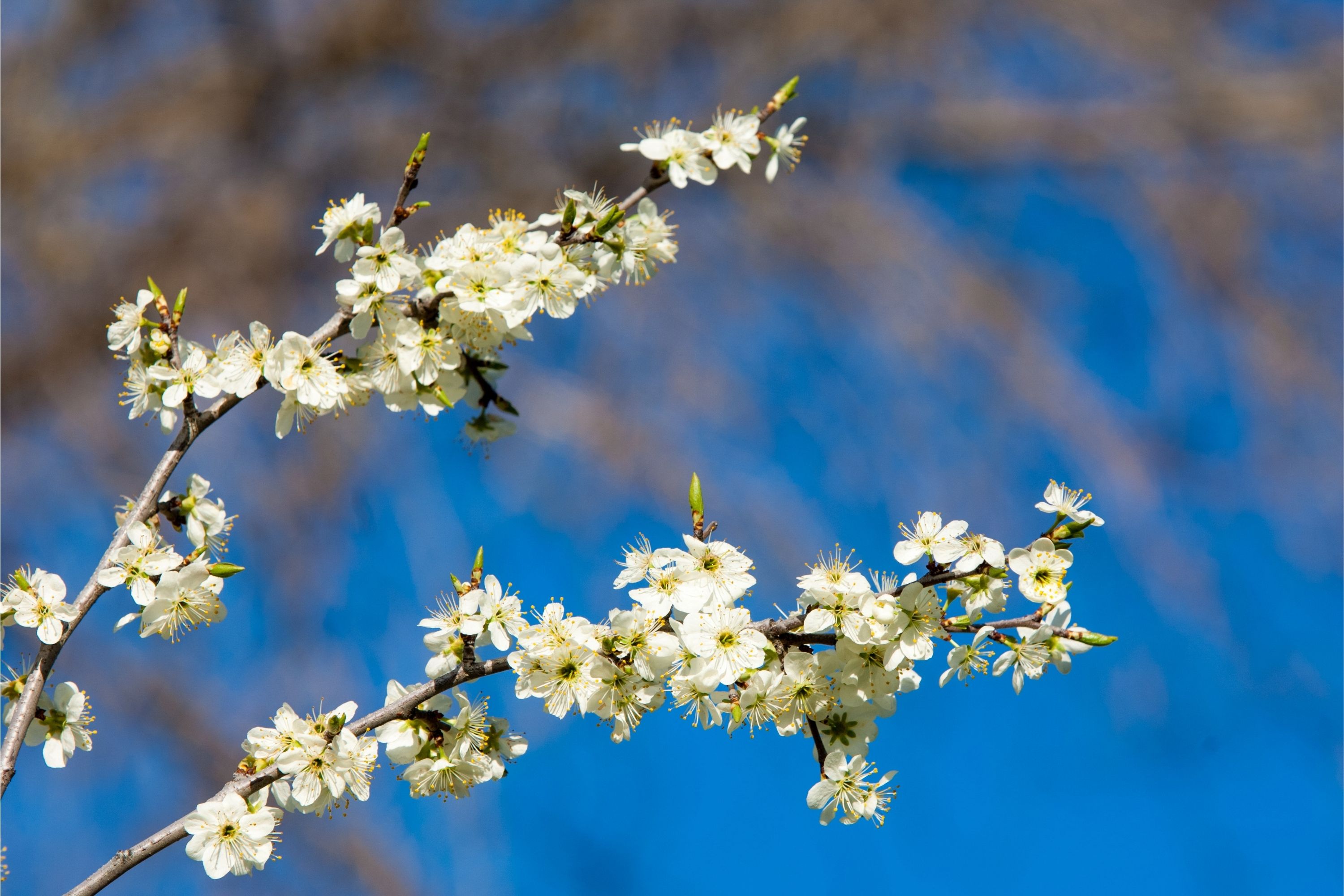Blackthorn
(Prunus spinosa)

Description
“Pet poisonous” – Toxic parts: leaves, pits Prunus spinosa, called blackthorn or sloe, is a species of flowering plant in the rose family Rosaceae. It is native to Europe, western Asia, and locally in northwest Africa. It is also locally naturalised in New Zealand, Tasmania and eastern North America. Prunus spinosa is a large deciduous shrub or small tree growing to 5 metres (16 ft) tall, with blackish bark and dense, stiff, spiny branches. The leaves are oval, 2–4.5 centimetres (0.79–1.77 in) long and 1.2–2 centimetres (0.47–0.79 in) broad, with a serrated margin. The flowers are about 1.5 centimetres (1⁄2 in) in diameter, with five creamy-white petals; they are produced shortly before the leaves in early spring, and are hermaphroditic and insect-pollinated. The fruit, called a "sloe", is a drupe 10–12 millimetres (3⁄8–1⁄2 in) in diameter, black with a purple-blue waxy bloom, ripening in autumn and harvested – traditionally, at least in the UK – in October or November after the first frosts. Sloes are thin-fleshed, with a very strongly astringent flavour when fresh. Prunus spinosa is frequently confused with the related P. cerasifera (cherry plum), particularly in early spring when the latter starts flowering somewhat earlier than P. spinosa.[citation needed] They can be distinguished by flower colour, creamy white in P. spinosa, pure white in P. cerasifera. They can also be distinguished in winter by the more shrubby habit with stiffer, wider-angled branches of P. spinosa; in summer by the relatively narrower leaves of P. spinosa, more than twice as long as broad; and in autumn by the colour of the fruit skin purplish black in P. spinosa and yellow or red in P. cerasifera. Prunus spinosa has a tetraploid (2n=4x=32) set of chromosomes.
Taxonomic tree:







